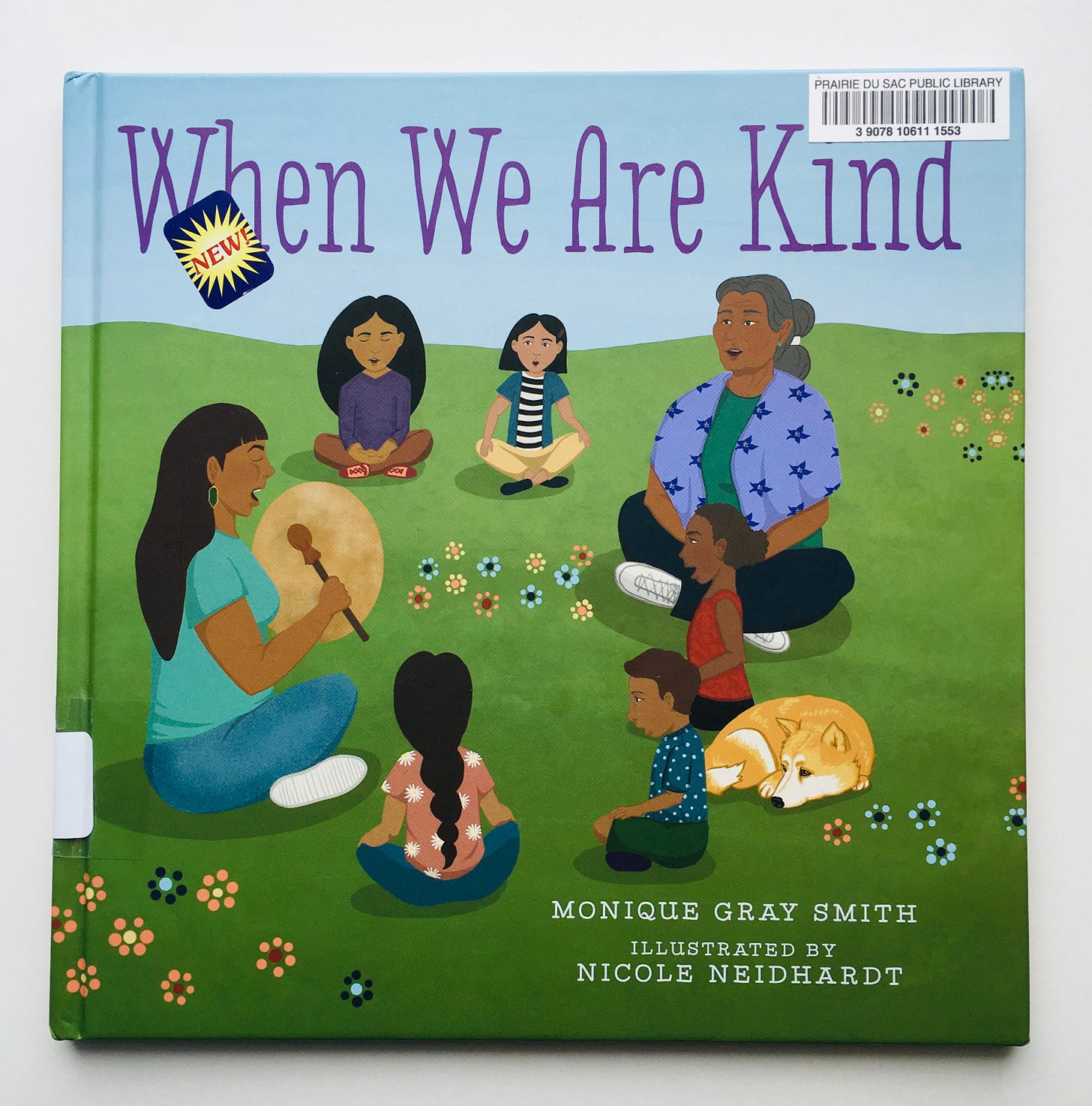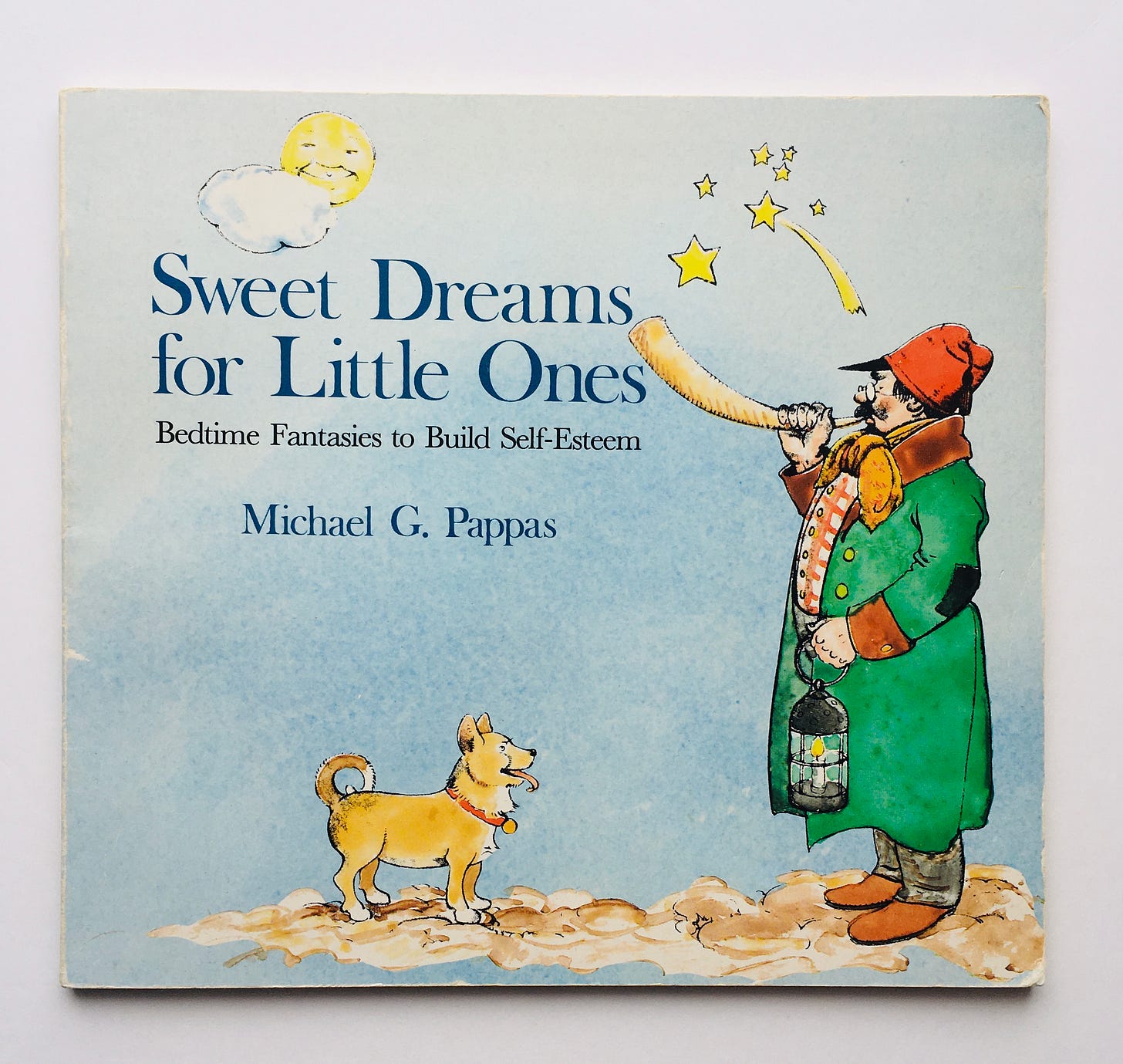Can we read? No. 34
Good morning!
Last week was busy one for me — I sent you my special edition on spring (so many good books there that we’re enjoying digging into in our house right now) as well as the April issue of (How) Can we read?, all about strategies for raising readers. Thank you to those of you who open my emails regularly, as well as those of you who just dip in occasionally — I’m grateful for your time and attention, in whatever capacity you choose to share it.
Let’s get to it today.
The Three Little Wolves and the Big Bag Pig by Eugene Trivizas, illustrated by Helen Oxenbury (1993)
I’ve told you that I believe strongly that children shouldn’t be introduced to any kind of folk/fairy tale variation until they’re familiar with the original (if my full rant on folk and fairy tales is of any interest, check out my special edition on the topic), and I’ve told you about my love of Helen Oxenbury (in issues No. 15 and No. 29), but I’ve never gotten the chance to talk about the two together, and what a pleasure. In this skewed version of the traditional tale of The Three Little Pigs, Trivizas has taken everything and turned it on its head in the most hilarious and welcome way. It’s not only the “victims” (if you can call them that to begin with) and the villian that have changed places, but the ways in which the Big Bad Pig commits his crimes: instead of blowing down a house of straw, the Pig sledgehammers the first wolf’s house of bricks. Instead of blowing down a house of sticks, the Pig uses a pnuematic drill to smash down the second wolf’s house of concrete. Instead of losing his battle entirely with a house of bricks, the Pig dynamites the third pig’s house of “barbed wire, iron bars, armor plates, and heavy metal padlocks.” Finally the beleaguered wolves get smart and try something different: they build a house of flowers, which so entrances and calms the Pig with its soft beauty that he experiences a change of heart — and spontaneous personality overhaul — after which the four animals live together in happiness and harmony. If this sounds like a story a young child can get behind, you’re exactly right — we’ve never read this without laughing (and if you have a kid who is in that construction-equipment-obsession stage, I cannot recommend this one enough). Oxenbury applies her considerable skill to this tale in the way that only she can, adding to the fun — and there is a lot of it here. After your children know the original, run, don’t walk to get this one — it’s funny, it’s over the top, it’s generally wonderful.
The All-Together Quilt by Lizzy Rockwell (2020)
This story, based on Rockwell’s real-life experience making community quilts in a multi-generational group in Connecticut, is a lovely example of community in action. It is, in the style of both Lizzie’s family and Lizzie personally (I wrote about her book, Plants Feed Me in my special edition on summer and her collaboration with her mother, Anne, Apples and Pumpkins, in my special edition on fall), a concept book — the narrative is straightforward and unfolds in a logical manner, but that’s part of what makes the Rockwell books so intriguing: Lizzie (and her parents) dig into the things and events in which children actually take part and take interest. “Jennifer and her friends meet on Fridays at the community center. They are making a quilt. Everyone works together” is an opening that leads, step by step, through the process of making a quilt, making friends, making progress. (I know one of you understands these things — hi Melissa! 👋 — but I don’t know beans about making a quilt, so that in and of itself was engrossing for me and my kids.) The togetherness here is so obvious it’s almost palpable — ditto the tenderness with which all the participants (young paired with older) help one another, learn alongside one another, make art together. This would be a pitch-perfect book to read before doing community service, before a classroom project, or to have as part of the community helper/worker section in your library. I’m already a fan of Lizzie Rockwell but she outdid herself with this one.
If you find you or your children have been bitten by the quilting bug, here are a handful of good read-alongs:
The Quiltmaker's Gift by Jeff Brumbeau
The Patchwork Quilt by Valerie Flournoy
Something From Nothing by Phoebe Gilman (I reviewed this in issue No. 16)
Luka’s Quilt by Georgia Guback
Sweet Clara and the Freedom Quilt by Deborah Hopkinson
The Quilt by Ann Jonas
The Quilt Story by Tony Johnston and Tomie DePaola
The Keeping Quilt by Patricia Polacco
When We Are Kind by Monique Gray Smith, illustrated by Nicole Neidhardt (2020)
This was one of the picture books we read for Morning Time* in March and I moved some things around in my newsletter planning so I could tell you about it ASAP. Part vision, part prayer, part example of what it looks like — I mean this literally — when we are kind, this beautiful book focuses first on what happens when our kindness radiates outward — “I am kind when I help my family, I am kind when I share with my friends” — before switching to what happens when kindness comes back — “I feel joy when my family and I are kind, I feel happy when my friend is kind to me.” It reminded me of the lovingkindness meditation where one first wishes well to oneself, then wishes well to another person, then wishes well to everyone on earth, only Smith breaks it down further here, offering a handful of examples of kindness one can offer and receive: to family, to friends, to animals, to neighbors, to Elders, to the earth, and (this was done so well) to oneself. Neidhardt’s digital artwork — which depicts various kinds of diversity with a special focus on Native Americans (Neidhardt is Diné/Navajo) — is simple but compelling, making it easy to understand the exact nature of the kindness in each image. On the surface this is a toddler book — and it is a terrific book for toddlers — but the message is so powerful and goes so deep, we can all benefit from its reminder regardless of our age.
*more on Morning Time in the February issue of (How) Can we read?, which was about reading routines
Sweet Dreams for Little Ones: Bedtime Fantasies to Build Self-Esteem by Michael G. Pappas (1982)
I picked up this book on one of my great many forays into thrift stores having never heard of it (or anything like it) before, and I’m so glad I snapped it up. It’s an old book, as you can see — readily available used, and also available new as a 30th anniversary edition, reprinted in 2012 — but don’t let its age deter you: it is full of imagination and magic and would be a welcome part of bedtime at any age (I have considered voice-recording these and playing them to myself; no lie). Separated into six categories — Getting Ready, Gently Growing, Gifts from the Planet, Touching Life, Helping, and Onward and Upward with themes ranging from family love to high-seas adventures and beyond — the “stories” in this book are more like meditations, using sweet and gentle guided imagery that evoke feelings of calm and comfort. The introduction explains they are “fantasy vignettes which focus on one or more of the basic needs known to affect all human behavior: affection, enlightenment, respect, responsibility, power, skill, wealth, and well-being.” The child is the center of the action here — if there is strength needed, the child is the hero; if help is required, the child is the one courageous and generous enough to give it — making this a little different than some of the other bedtime meditation stories we’ve read, which are lovely but often a passive experience. This 1982 book seems way ahead of its time — it fits right into 2021, when I think I can safely say that children (heck, adults too) need as much warmth, happiness, and nourishment (before bed or otherwise) that we can get.
If you like this one, I also recommend Moonbeam: A Book of Meditations for Children by Maureen Garth (and her three similar titles, Starlight; Earthlight; and Sunshine)
That’s all from me. Thanks for being here, and have a good one!
Sarah
@can_we_read





